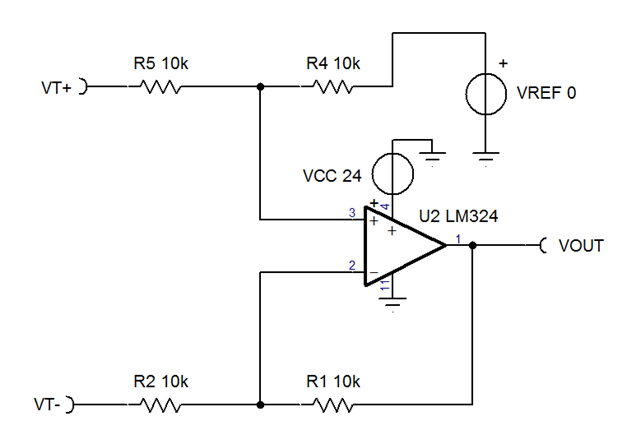Other Parts Discussed in Thread: TLV4170
Disclaimer: my electronics knowledge is limited.
Goal 1:
See attached figure. I want to measure the voltage drop at various locations (voltage taps) along a DC power cable. The cable has a 32V drop across it @ 100A. The cable power supply is separate from the op amp power supply (no common grounds). Basically, I want to use op amps to measure voltage like a multi-meter. Is it possible to measure these voltage drops/taps using op amps? What is the circuit? I have several LM324A and INA117P chips to try. Are there better chip options for this application?
Goal 2:
Once I can measure the voltage taps, I would like to subtract one voltage tap from another using op amps (e.g. VT2 - VT3) to monitor the differences between the cable sections. The sections are all the same, so the voltage drop should be similar across each of them, and they should subtract to ~0V. Is this possible and what is the circuit?
Note: I do not currently have a bipolar supply for the op amps, but am willing to get one if necessary, or try the virtual ground technique. I am currently using a 15V single supply for the op amps. Right now, I am simulating the large power cable by using 4 resistors in series and powering the resistor chain with a separate power supply.



